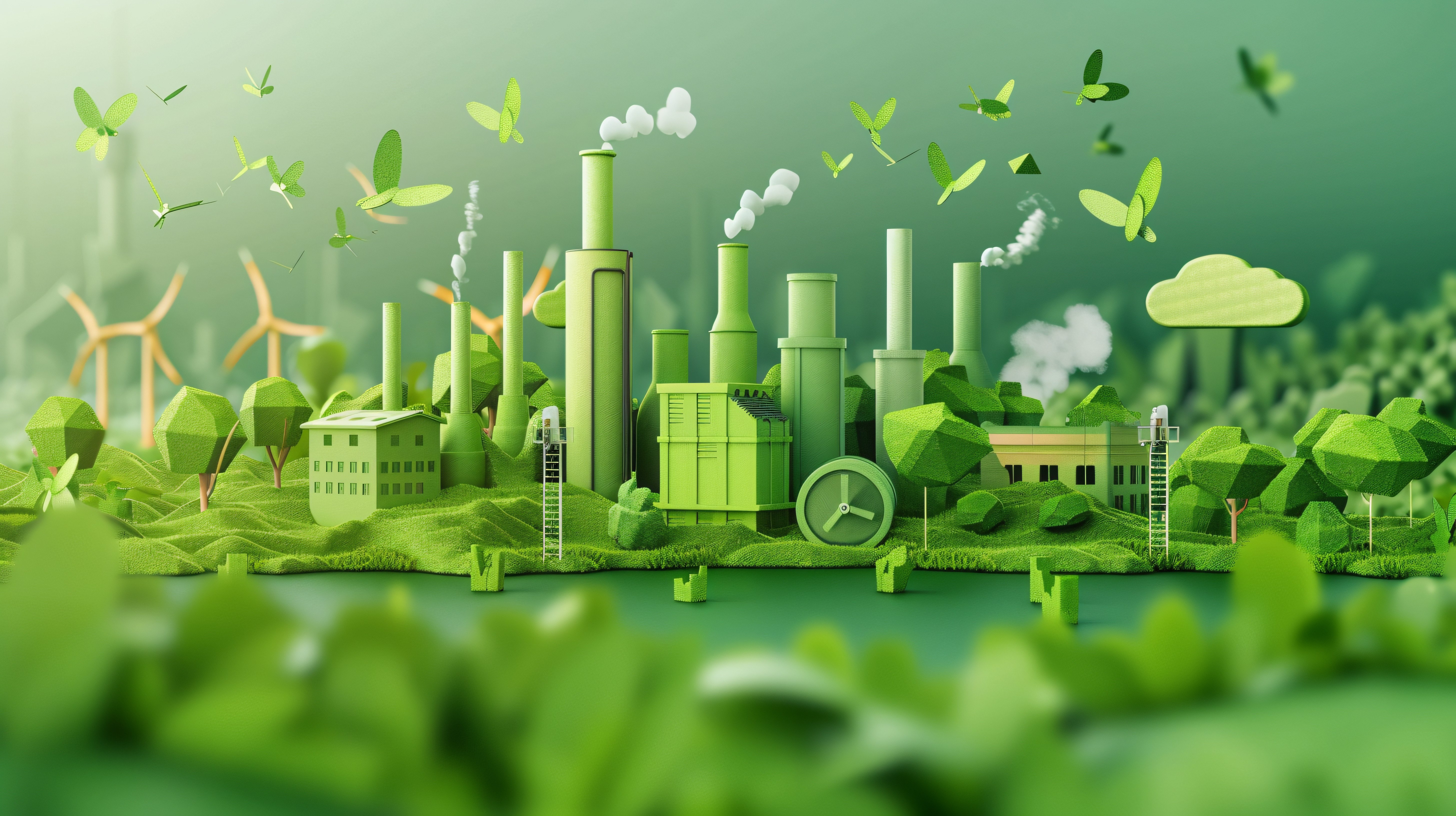Author
 Ken Christie
Ken Christie is the Country Director at EPLAN UK. He has been working at EPLAN for 9 years with his expertise in the electrical design industry.
Ken Christie auf LinkedIn
Ken Christie
Ken Christie is the Country Director at EPLAN UK. He has been working at EPLAN for 9 years with his expertise in the electrical design industry.
Ken Christie auf LinkedIn
Manufacturing a Greener Future
Much of this is arising from pressure that is being exerted by regulators, but there is little doubting the influence that’s also being brought to bear by consumers (public opinion) and investors.
Manufacturers are increasingly realising that becoming more sustainable isn't just an ethical imperative; it's a business imperative.
What’s more, there are good commercial reasons for moving towards a more sustainable future.
Britain’s manufacturers are already facing a future that is heavily impacted by resource scarcity, volatilities in the global economy, geopolitical instability, skill shortages, and sharp inflationary increases in the cost of raw materials and energy.
Panel and machine builders, as well as every manufacturing sector, can mitigate for many of these factors by adopting more sustainable strategies.
The Sustainability Imperative
Sustainability in manufacturing is a multifaceted challenge. It encompasses everything from reducing waste and energy consumption to minimising the environmental impact of products throughout their lifecycle.
The benefits can be substantial, ranging from cost savings to improved brand reputation, and enhanced employee satisfaction.
However, adopting sustainability strategies can seem daunting. Many manufacturers, particularly SMEs, are still hesitant to invest in initiatives due to perceived high costs.
This is a misconception: by optimising processes and reducing waste, businesses can often recoup their investment, enhance their competitiveness, and even boost profits.
The IFM estimates that the benefits the UK could gain through increasing energy- and resource-efficiency could be in the region of £10 billion per annum in additional profit for manufacturers.
Added to which, would be the creation of 300,000 new jobs and a 4.5% reduction in annual GHG emissions.
There is also a legal imperative to make the switch to more sustainable practices.
Under the 2015 Paris Agreement, countries across the world agreed to cut greenhouse gas emissions to hold ‘the increase in the global average temperature to well below 2°C above pre-industrial levels and pursuing efforts to limit the temperature increase to 1.5°C above pre-industrial levels.’
The UK is a signatory to the Paris Agreement and was also the first G7 country to make a legally binding undertaking to achieve Net Zero greenhouse gas emissions by 2050.
It’s estimated that around 11% of the UK’s GHG emissions are caused by manufacturing. Plus, the electricity grid is being transitioned across to zero carbon, while aiming to have all Britain’s businesses (including manufacturers) powered by clean electricity by 2035.

What does a Sustainable Strategy Look Like?
Sustainable manufacturing strategies are as diverse as the industries they serve. They include:
- Resource Optimisation: e.g. lean manufacturing principles, minimising material uses in products, or using a higher percentage of recycled materials in their production.
- Energy Efficiency: e.g. investing in energy-efficient equipment, on-site renewable energy generation to lower reduce energy consumption.
- Water Stewardship: e.g. reusing wastewater, employing water-saving technologies, and installing rainwater harvesting systems.
- Product Circularity: e.g. moving away from 'take-make-waste' to a cyclical system using waste to make new products, designing for longevity to extend their lifespan, incorporating easy-to-recycle components.
Measuring Gains & Performance
Progress towards sustainability targets typically means monitoring and reporting against robust, tangible metrics.
These might include energy and water consumption, how much waste is going to landfill, and recycled product content percentages.
There are also robust, independent assessments which can be employed to ensure accuracy, openness, and complete transparency of sustainability reporting. Perhaps one of the most respected are Environmental Product Declarations (EPDs) which provide a comprehensive overview of a product or service’s environmental impact throughout its lifecycle, based on a lifecycle assessment.
Eplan’s Sustainability in Manufacturing Ebook
In Eplan’s Sustainability in Manufacturing ebook, we consider all these issues in more detail.
Plus, we consider the role of technology and how it can support a journey towards more sustainable manufacturing.
By partnering with forward-thinking providers to support sustainability strategies, manufacturers can unlock the full potential of a “greener” future.


Comments